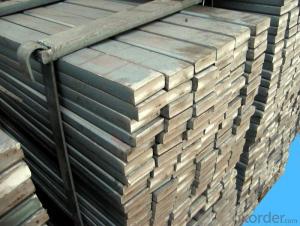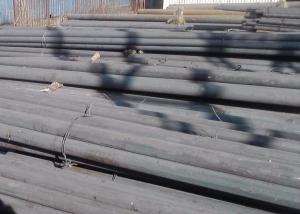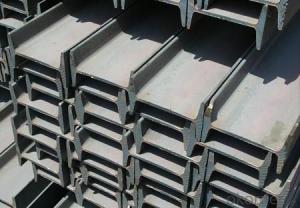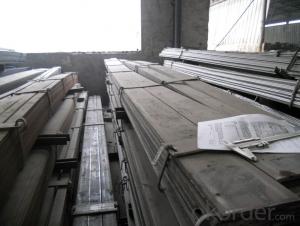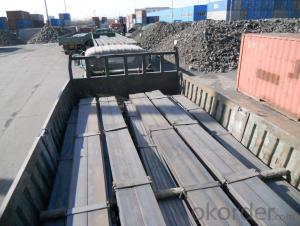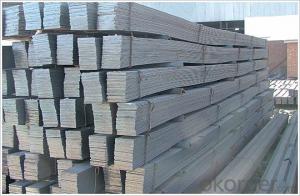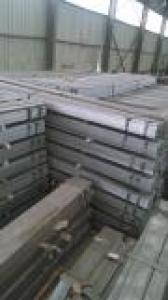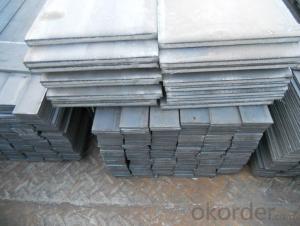Hot Rolled Flat Bars with Material Good Price
- Loading Port:
- Tianjin
- Payment Terms:
- TT OR LC
- Min Order Qty:
- 25 m.t
- Supply Capability:
- 10000 m.t/month
OKorder Service Pledge
OKorder Financial Service
You Might Also Like
Product Description:
OKorder is offering high quality Flat Bar at great prices with worldwide shipping. Our supplier is a world-class manufacturer of steel, with our products utilized the world over. OKorder annually supplies products to European, North American and Asian markets. We provide quotations within 24 hours of receiving an inquiry and guarantee competitive prices.
Product Applications:
Flat Bars are ideal for structural applications and are widely used in the construction of buildings and bridges, and the manufacturing, petrochemical, and transportation industries.
Product Advantages:
OKorder's Flats Barare durable, strong, and resist corrosion.
Main Product Features:
· Premium quality
· Prompt delivery & seaworthy packing (30 days after receiving deposit)
· Corrosion resistance
· Can be recycled and reused
· Mill test certification
· Professional Service
· Competitive pricing
Product Specifications:
Manufacture: Hot Rolled
Grade: Q195 – 235
Certificates: ISO, SGS, BV, CIQ
Length: 6m – 12m, as per customer request
Packaging: Export packing, nude packing, bundled
Chemical composition of Q235
Alloy No | Grade | Element(%) | ||||
C
| Mn
| S
| P
| Si
| ||
Q235
|
B
|
0.12—0.20 |
0.3—0.7 |
≤0.045 |
≤0.045
|
≤0.3
|
Physical properties of Q235
Alloy No | Grade | Yielding strength point(Mpa) | Tensile strength (Mpa) | Elongation after fracture(%) | ||||||
Thickness (mm) | Thickness (mm) | |||||||||
≤16 | >16--40 | >40--60 | >60--100 | ≤16 | >16--40 | >40--60 | >60--100 | |||
≥ | ≥ | |||||||||
Q235 |
B |
235 |
225 |
215 |
205 |
375--500 |
26 |
25 |
24 |
23 |
FAQ:
Q1: Why buy Materials & Equipment from OKorder.com?
A1: All products offered byOKorder.com are carefully selected from China's most reliable manufacturing enterprises. Through its ISO certifications, OKorder.com adheres to the highest standards and a commitment to supply chain safety and customer satisfaction.
Q2: How do we guarantee the quality of our products?
A2: We have established an advanced quality management system which conducts strict quality tests at every step, from raw materials to the final product. At the same time, we provide extensive follow-up service assurances as required.
Q3: How soon can we receive the product after purchase?
A3: Within three days of placing an order, we will begin production. The specific shipping date is dependent upon international and government factors, but is typically 7 to 10 workdays.
Images:

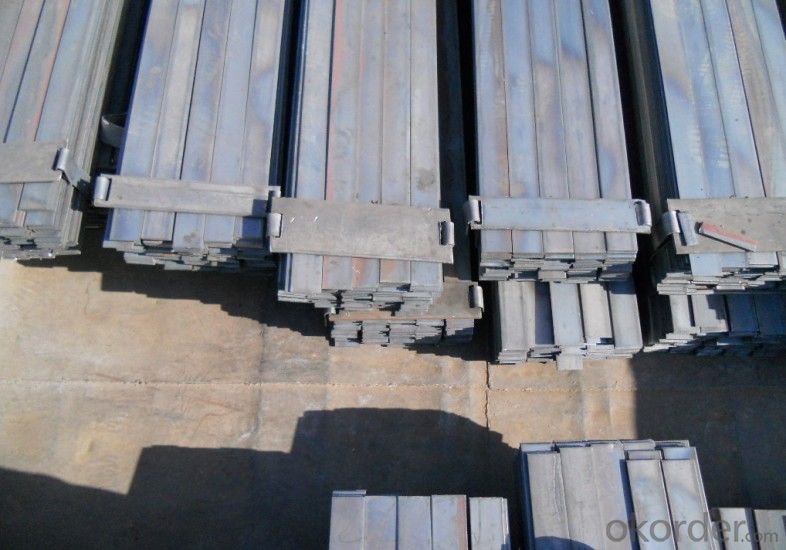
- Q:What is the thickness tolerance for steel flat bars?
- The thickness tolerance for steel flat bars can vary depending on the specific grade and manufacturing standard being followed. However, in general, the industry standard tolerance for steel flat bars is typically +/- 0.005 inches (0.127mm) to +/- 0.010 inches (0.254mm). This means that the actual thickness of a steel flat bar can deviate within this range from the specified nominal thickness. It is important to consult the relevant manufacturing standard or supplier specifications for the specific tolerance requirements of the steel flat bars being considered.
- Q:What is the thickness deviation of 40*4 galvanized flat steel?
- Main application: flat steel is used as a material, used for making iron, tools and machinery parts, and used as frame structures and escalators for buildings
- Q:Can steel flat bars be used for manufacturing agricultural equipment or machinery?
- Yes, steel flat bars can be commonly used for manufacturing agricultural equipment or machinery. Steel is a durable and strong material that provides the necessary strength and stability required for agricultural equipment, making it suitable for the manufacturing process. Additionally, steel flat bars can be easily shaped and welded, allowing for customization and adaptability to meet specific agricultural machinery needs.
- Q:How large is the flat steel used for equipotential grounding?
- 3.2.15 general equipotential connection with the sectional area of protective bonding conductors, shall not be less than the maximum protection of conductor size distribution line 1/2, protective bonding conductor cross-sectional area of the minimum and maximum value shall comply with the provisions of table 3.2.15.
- Q:Are steel flat bars suitable for making machinery frames or chassis?
- Certainly, machinery frames or chassis can be constructed using steel flat bars. Steel, renowned for its robustness and endurance, proves to be an optimal option for creating resilient and dependable machinery frames or chassis. The flat bars' shape facilitates effortless fabrication and welding, enabling the construction of frames or chassis with impeccable measurements and structural soundness. Moreover, steel possesses exceptional load-bearing capabilities, enabling it to withstand substantial burdens and furnish stability to the machinery. Furthermore, steel's abundance and cost-effectiveness compared to alternative materials render it a favored choice for fabricating machinery frames or chassis across diverse industries.
- Q:Can steel flat bars be galvanized or coated with other materials?
- Steel flat bars can undergo galvanization or be coated with alternative materials. Galvanization involves applying a zinc protective layer to prevent corrosion. This can be accomplished through hot-dip galvanization, where the steel is immersed in molten zinc, or electroplating, which applies a zinc coating using an electrochemical process. In addition to galvanization, alternative materials can be used to coat steel flat bars for various purposes. These coatings offer extra corrosion protection, enhance the steel's appearance, or improve specific properties. Common coating materials for steel flat bars include epoxy, polyurethane, powder coating, and paint. The application methods vary, such as spraying, dipping, or powder coating, depending on specific requirements and desired outcomes. The choice of coating material and method relies on factors like the intended use, the environment of use, and desired appearance or performance characteristics. It is crucial to consult experts or professionals in the field to determine the most suitable coating option for individual needs.
- Q:How do steel flat bars compare to ceramic flat bars?
- Different properties and characteristics distinguish steel flat bars from ceramic flat bars, making them appropriate for various applications. Known for their strength and durability, steel flat bars consist of a blend of iron and carbon, resulting in a high tensile strength. This quality renders them perfect for heavy-duty applications like construction, manufacturing, and the automotive industry. Furthermore, steel flat bars exhibit resistance to impact, minimizing the likelihood of breakage or cracking under pressure. Additionally, their malleability allows for easy welding and manipulation, enhancing their versatility. Conversely, ceramic flat bars are renowned for their resistance to heat and low friction properties. Crafted from non-metallic materials, such as clay or porcelain, these bars undergo high-temperature firing, rendering them ideal for applications requiring heat resistance, such as furnace linings or kiln furniture. Moreover, their low friction characteristics deem them suitable for applications where friction reduction is crucial, such as bearings or cutting tools. In terms of aesthetics, steel flat bars emanate a metallic and industrial appearance, while ceramic flat bars exude refinement and elegance. This visual discrepancy may influence the selection between the two types of flat bars, depending on the desired visual impact within the application. To summarize, steel flat bars are favored for their strength, durability, and versatility, making them appropriate for heavy-duty applications. Conversely, ceramic flat bars are valued for their heat resistance and low friction properties, making them ideal for applications necessitating these attributes. Ultimately, the decision between steel and ceramic flat bars hinges on the specific requirements and demands of the application at hand.
- Q:What are the different types of steel flat bar profiles?
- There is a wide variety of steel flat bar profiles available, each designed to meet specific applications and requirements. Some commonly used types include: 1. Mild Steel Flat Bar: This type of steel flat bar is known for its versatility and affordability, making it widely used in construction, manufacturing, and general fabrication projects. 2. Stainless Steel Flat Bar: Stainless steel flat bars are highly resistant to corrosion and have exceptional strength. They are commonly used in industries such as food processing, chemicals, and marine applications, where protection against rust and corrosion is crucial. 3. Alloy Steel Flat Bar: By incorporating elements like chromium, nickel, or molybdenum, alloy steel flat bars are enhanced in terms of strength, hardness, and durability. They are often used in applications that require high strength and resistance to wear and tear. 4. Tool Steel Flat Bar: Tool steel flat bars are specifically designed for cutting tools, mold-making, and other tooling applications. They exhibit high hardness, wear resistance, and toughness, making them suitable for machining and shaping operations. 5. Carbon Steel Flat Bar: Carbon steel flat bars primarily consist of carbon as the main alloying element. They are known for their high tensile strength, excellent weldability, and affordability. Carbon steel flat bars find applications in structural components, machinery parts, and general fabrication. Each of these flat bar profiles possesses unique properties and advantages specific to their applications. The selection of the appropriate type depends on factors such as the intended use, environmental conditions, and required mechanical properties.
- Q:Are steel flat bars suitable for earthquake-resistant structures?
- Steel flat bars can be suitable for earthquake-resistant structures depending on several factors. Steel is a highly ductile and strong material, making it ideal for withstanding seismic forces. Flat bars, in particular, offer several advantages for earthquake-resistant structures. Firstly, steel flat bars have excellent tensile strength, which allows them to absorb and distribute seismic forces more effectively. This property enables the building to flex and bend during an earthquake, rather than experiencing brittle failure. This flexibility helps prevent catastrophic collapse and reduces the risk of injury or loss of life. Secondly, steel flat bars can be easily fabricated and joined together, allowing for efficient construction. This ease of use increases the speed of construction, which can be crucial in earthquake-prone areas where rapid rebuilding is necessary after a seismic event. Furthermore, steel flat bars can be used in various structural elements such as beams, columns, and braces to enhance the overall stability and stiffness of the building. When properly designed and integrated into the structural system, steel flat bars can help resist lateral forces, such as those induced by an earthquake. However, it is important to note that the suitability of steel flat bars for earthquake-resistant structures also depends on other factors such as the design, detailing, and construction practices. Proper engineering and design considerations, including seismic analysis and design codes, are critical to ensure that the structure can withstand the expected seismic forces. Additionally, regular inspection and maintenance of the structure are necessary to identify and address any potential issues or damage that may compromise its earthquake resistance. In conclusion, steel flat bars can be a suitable choice for earthquake-resistant structures due to their high tensile strength and flexibility. However, it is crucial to consider various factors and follow proper design and construction practices to ensure the overall safety and performance of the structure during seismic events.
- Q:What are the different thicknesses available for steel flat bars?
- Steel flat bars are available in a range of thicknesses to suit various applications and requirements. The thickness options for steel flat bars typically vary from 1/8 inch to 1 inch or even more, depending on the specific needs of the project. These different thicknesses allow for flexibility in designing and constructing structures that require strength, durability, and stability. The choice of the appropriate thickness depends on factors such as the intended use, load-bearing capacity, and structural integrity needed for the particular application.
1. Manufacturer Overview |
|
|---|---|
| Location | |
| Year Established | |
| Annual Output Value | |
| Main Markets | |
| Company Certifications | |
2. Manufacturer Certificates |
|
|---|---|
| a) Certification Name | |
| Range | |
| Reference | |
| Validity Period | |
3. Manufacturer Capability |
|
|---|---|
| a)Trade Capacity | |
| Nearest Port | |
| Export Percentage | |
| No.of Employees in Trade Department | |
| Language Spoken: | |
| b)Factory Information | |
| Factory Size: | |
| No. of Production Lines | |
| Contract Manufacturing | |
| Product Price Range | |
Send your message to us
Hot Rolled Flat Bars with Material Good Price
- Loading Port:
- Tianjin
- Payment Terms:
- TT OR LC
- Min Order Qty:
- 25 m.t
- Supply Capability:
- 10000 m.t/month
OKorder Service Pledge
OKorder Financial Service
Similar products
New products
Hot products
Hot Searches
Related keywords
